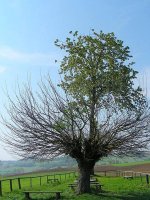Gram Paw smurf
Member
well you didn't just ask if ppl thaught it was possible though you kind of asked if it could be considered an evolutionary reason for the resin being there in the 1st place.
Is a big difference between the 2 questions, n many have said it's possible to happen, but doesn't seem many think it's a reason for it being there.
cheers,.................................................gps
Is a big difference between the 2 questions, n many have said it's possible to happen, but doesn't seem many think it's a reason for it being there.
cheers,.................................................gps



